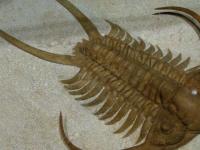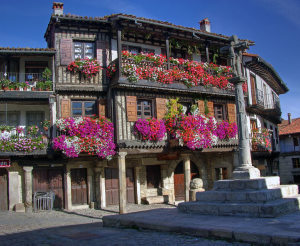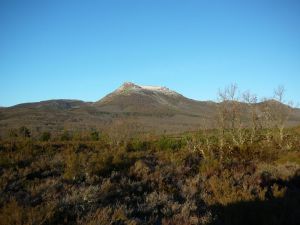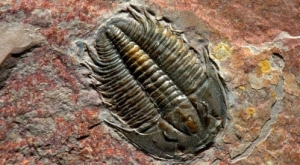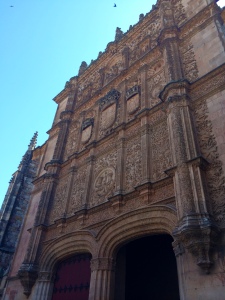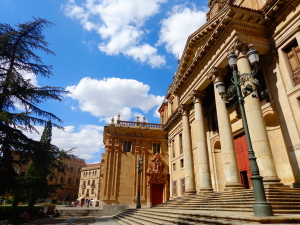My Spanish friends love to joke with me about the fact that all the buildings in Salamanca are older than my entire country. This week, to make the historical monuments of Salamanca; including the oldest university in Spain and the ancient Roman Bridge, look young, researchers from a combination of Spanish Universities, came together in the provence of Salamanca and found a fossil that dates back more than 520 MILLION years.
Heres my translation of an article from La Voz de Galicia, titled Localizado en un pueblo de Salamanca el fsil trilobite ms antiguo del mundo.
(http://www.lavozdegalicia.es/noticia/sociedad/2015/06/28/localizado-pueblo-salamanca-fosil-trilobite-antiguo-mundo/00031435487920505761236.htm)
La Alberca, a picturesque and truly fairly-tale town in the middle of the Sierra de Francia mountains.
The article begins:
An expedition of paleontologists from different Spanish universities have found what may be the oldest trilobite fossil in the world, here in the Rinconada de la Sierra, in the province of Salamanca. The fossil is thought to be at least 520 million years old.
The fossil was found thanks to the work of various geologists, including paleontologist Eladio Grin, of the University of Zaragoza, and Rodolfo Gozalo, professor of Geology, University of Valencia.
Up until now, this type of trilobite (an arthropod that lived during the Paleozoic period many millions of years ago) could only be found in Siberia, Morroco and in one area along the border between the United States and Mexico. This explains the relevance of this discovery, says Gozalo.
The finding occurred a few weeks ago, as a result of a research project, developed by paleontologists from various universities, who work as a part of the UNESCO team. They have been working for some time to redefine the period named the Cambrian Period, the first of the Primary Era, which took place between 570 million and 500 million years ago.
The Sierra de Francia, located to the south of Salamanca, and considered part of the Natural Park of Las Batuecas, is one of the best places for research into this time period. Many different small towns in the region, such as Monsagro, El Mallo, El Cabaco and Serradilla del Arroyo, are home to eroded hillsides where it is possible to find fossils which been there for several hundreds of millions of years.
The possible existence of this type of fossil in the Rinconada de la Sierra has been known since 1972, thanks to the geological research of Carlos Garca Figuerola, in Salamanca. The preservation of these fossils is owed to the structural creases in the earth. The Rinconada is one of the best places to analyze the Cambrian period, according to Rodolfo Gozalo. These towns are filled with Arenisca (Sandstone) de Tamames, a type of rock that suggests the existence of these types of fossils.
The team of paleontologists is taking advantage of a fairly new section of road in the mountains, which was constructed about ten years ago. They decided to begin a series of surveys and projects, to look at some formations situated two kilometers away from the Rinconada to see what they might find. After one whole day, chipping away, we discovered the fossil, which is 520 million years old, said the scientist.
For now, the trilobite fossil is being stored in a museum at the University of Zaragoza, and in the coming weeks the museum will offer all kinds of explanations about the finding through scientific publications. A preview has already been available for a few days, and can be found in the Cambridge Scientific Journal, an influential journal in this field.
According to researchers, this type of trilobite could previously only be found in in two places in Spain; in mineral deposits in the mountains of Crdoba, and in the Baos de Luna, within the region of Len.
At the moment, the fossil found in the province of Salamanca, has been baptized with the name Lunagraulos Tamamensis and only one other fossil of this kind exists, located in the region of Alconera, in the region of Badajoz, he noted.
Read more about the research being conducted right here at the University of Salamanca. http://saladeprensa.usal.es/webusal/usal_noticia_repositorio/ciencia
Interested in geology, paleontology, archaeology etc? Visit Salamanca, and discover the mountainous province outside the city and take a geological hike! While Salamanca is known for language and history, it is clear that this city’s importance in the sciences should not be forgotten!
And check out this Facebookpage, with some stunning antique pictures of this gorgeous city way back in the day.






